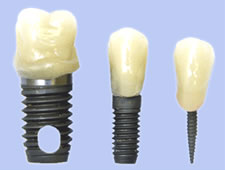In this modern world of everything getting smaller and working better, why should the same engineering principles not apply to dental implants? With the advent of titanium alloy, we can create stronger mini dental implants that are around half the size of a regular dental implant and just as strong. With over 30 million Americans without teeth, there is a huge demand for dentures that don’t move when patients try to eat. Most of these patients have not been offered dental implants for lots of reasons. More often than not, it is because of the high cost of implant treatment. Continue reading
Category Archives: Denture
Buying Dental Gold
Dental scrap gold is fast becoming an additional resource for people wishing to sell gold. Dental scrap gold consists of any gold that has been used in the mouth and is worth more sold than kept. It can include any failed, damaged or deteriorated gold or silver crowns, any bridges, PFM’s (porcelain fused to metal), PFG’s (porcelain fused to gold), Inlays, Gold Partials and more. In fact here is a list of the dental scrap including gold, silver and platinum that can be sold, and these can be with or without bone or porcelain: Continue reading
Root Canal Treatment vs. False teeth
    When there is a cavity in a tooth, you can have it filled; but what happens if caries has spread deep into your tooth, such that your tooth is infected beyond salvage point? There are several options that you may go for:
How to Prevent Denture Salivation
Though dentures are often checked for fit and comfort during dentist appointments, they often wear out or cause sudden problems, such as mouth dryness, increased salivation and discomfort. According to Net Wellness, this is most often due to regular changes in the size and shape of your gums, causing your dentures to fit differently from how they once did. Increased salivation can be a daily hassle for many people, leading many to wonder how to return to their regular lives. Continue reading
The Branching Technique for Dentures
We hear from a lot of denture wearers that tell us stories about having a lot of difficulty eating the foods that they want and need to eat, in speaking clearly, and with their appearance. To solve these problems, we use a more involved denture technique called the Branching Technique. The “branching technique,” taught first by Pound and later by Turbyfill and others, allows for extended treatment and management of more complex patient problems.  Less than 1% of dentists in the United States use this technique because of the great amount of training required to learn it, as well as more time spent on working with the patient. Continue reading
Recipe for Homemade Denture Adhesive
Dentures are sets of artificial teeth designed to fit inside the mouth. They are worn by people who no longer have their natural teeth. When natural teeth are removed, the jawbone begins to deteriorate. Over time, this affects the shape of the jaws, which can cause dentures to shift uncomfortably inside the mouth. To hold dentures in place, an adhesive can be placed along the inside of the prosthetic before insertion. This will hold the denture steady throughout the day, allowing the wearer to function with a higher degree of confidence and comfort. Continue reading
Types of Ultrathin Dentures
Dentures have a bad rap of being unsightly, uncomfortable, and difficult to eat with. However, advances in the way that dentures are made have resulted in dentures that are easy to wear, look great, and—most importantly—fit snugly and comfortably. Ultrathin dentures may be made out of a variety of materials and can fit any number of budgets. Continue reading
